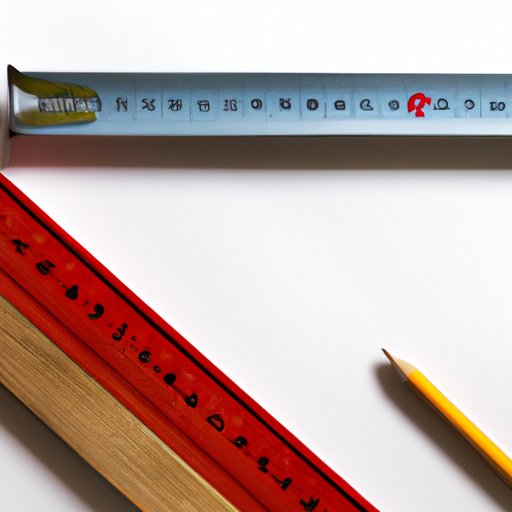Introduction
Measuring square footage accurately is crucial in many areas of life, from home renovation projects to real estate transactions. In this article, we will provide a comprehensive guide on how to measure square footage like a pro. We will cover everything from why accurately measuring square footage matters, tools and methods for measuring square footage, common mistakes to avoid, and legal and regulatory aspects of measuring square footage.
A Beginner’s Guide to Measuring Square Feet Like a Pro
Square footage is the measurement of the area of a space in square feet. Accurately measuring square footage is essential when buying and selling property, obtaining building permits, or calculating material costs. To measure square footage, you need to measure the length and width of the space and multiply them together. If the space is irregularly shaped, you may need to divide it into smaller shapes and add up the areas of each shape.

Why Accurately Measuring Square Feet Matters for Your Home
Accurately measuring square footage matters not just for buying and selling homes, but also for home renovation projects, furniture placement, and calculating energy usage. Measuring odd-shaped rooms or outdoor areas, such as patios and decks, can be tricky. To measure odd-shaped rooms, divide them into smaller shapes, such as triangles and rectangles, and add them together to get the total square footage. When measuring outdoor areas, make sure to include all nooks, crannies, and angles to get an accurate measurement.
3 Simple Tools You Can Use to Measure Square Feet
There are several tools and methods for measuring square footage, including traditional measuring tapes, laser measures, and 3D scanning technology. Traditional measuring tapes are affordable and easy to use, but they require a bit of math to calculate the square footage. Laser measures are more accurate and efficient, providing instant measurements with a push of a button. 3D scanning technology is the most accurate method, but it can be expensive and requires special training.
Common Mistakes to Avoid When Measuring Square Feet
When measuring square footage, it’s easy to make mistakes that can have significant consequences. The most common mistakes people make when measuring square footage include forgetting to account for furniture or fixtures, not measuring the entire space, and failing to account for non-standard layouts. To avoid these mistakes, make sure to measure every inch of the space, move furniture and fixtures out of the way, and account for non-standard layouts by dividing the space into smaller shapes.
Measuring Square Feet for Commercial Spaces: Tips and Tricks
Measuring square footage for commercial spaces can be challenging due to non-standard layouts, shared spaces, and different types of tenants. To account for non-standard layouts, it’s essential to divide the space into smaller shapes and add them together. It’s also crucial to differentiate between rentable square feet and usable square feet and account for shared spaces, such as hallways and elevators.
How to Use Square Feet Calculators: A Step-by-Step Guide
If math isn’t your strong suit, there are plenty of online square footage calculators that can do the math for you. Simply input the length and width of the space, and the website will calculate the square footage for you. Some calculators also provide additional information, such as the number of tiles or amount of paint needed for the space.
Understanding Building Codes and Square Footage Regulations
Measuring square footage isn’t just a matter of accuracy; it’s also a matter of legality. Building codes and regulations determine how square footage should be calculated and what can be included in the measurement. For example, some building codes include areas such as elevators and hallways, while others do not. It’s essential to understand these regulations to avoid legal issues down the road.
Conclusion
Accurately measuring square footage is essential in many aspects of life, from buying and selling property to renovating a home. By following our tips and tricks, using the right tools, avoiding common mistakes, and understanding regulations, you can measure square footage like a pro. Remember to measure every inch of the space, account for odd shapes, and use reputable resources to ensure a successful measurement.
